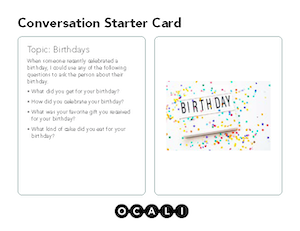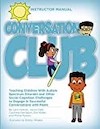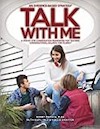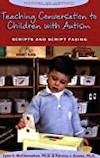Autism Center Grab and Go Resource Gallery of Interventions
Conversation Starter Cards
Explore conversation starter cards to help autistic individuals initiate or sustain conversations with peers, family members, and/or community members. Conversation starter cards are specifically designed for individuals who need extra support on how to begin a natural conversation and help to stay on the identified topic. Conversation starter cards provide visual prompts to help increase an individual's communication and social skills. These starter cards should be portable (size of an index card, post-it note, bookmark) and may be represented by pictures, graphics, icons, or word text based on an individual's communication mode.
Examples

Conversation Starter Cards
- Conversation Starter Card - Birthday Example
- Conversation Starter Card - Blank Template - 2 choices
- Conversation Starter Card - Blank Template - 4 choices
- Conversation Starter Card - Blank Template - Grid - Topic Choices
- Conversation Starter Card - Family Dinner Example
- Conversation Starter Card - Movies Example
- Conversation Starter Card - Sam Example
- Conversation Starter Card - Younger Individual - Zoo Animals Example
Videos
Book Suggestions

Conversation Club
Cannon, L.
This curriculum offers an innovative, data-based method of teaching both the how and why of conversation to students with high-functioning autism and other social cognition challenges. We invite students to become club members, teach them the constellation of skills required for successful conversation, and include a cast of kid-friendly characters designed to facilitate thinking about the social significance underlying each skill.

Talk With Me: A Step-By-Step Conversation Framework for Teaching Conversational Balance and Fluency
Mataya, K.
Conversation is everywhere: at the lunch table, at after-school activities, in the line for the water fountain, at overnight camp during downtime, at work with a coworker, and at a Thanksgiving gathering. Regardless of the setting, this critical skill, human conversation, is challenging for many individuals with high-functioning autism spectrum disorder (HF-ASD), children and adults alike. For these reasons, it is essential to equip individuals with ASD with effective conversational skills. The Conversation Framework is a unique strategy that provides an approach to assessing and teaching conversation skills in a group setting that is effective for most students who have difficulty engaging in conversations, including students with HF-ASD. The Conversation Framework presented in Talk With Me breaks down the elements of a conversation which must be mastered in order to be proficient at carrying out conversations. The framework was developed and refined over many years based on a review of the relevant research along with close observation of how people talk to each other- what conversations really sound like. Many find it difficult to teach conversation skills, but the Conversation Framework provides a simple and easy-to-implement process for teaching effective conversational habits. If you're looking for a comprehensive model with assessments, data collection, visual supports, drills, and prompt examples, this is your book!

Teaching Conversation to Children with Autism: Scripts And Script Fading (Topics in Autism)
McClannahan, L. E., & Krantz, P. J
Many children and adults with autism have difficulty communicating, especially starting and maintaining conversation. Teaching Conversation to Children with Autism is the first book to describe how scripts and script fading can provide a predictable and meaningful structure for children and adults with autism to engage in conversation. Using this strategy, children begin by playing recorded words or phrases (or reading written ones aloud) to initiate conversation, and often progress to speaking spontaneously with other children or adults. This book is written by Drs. McClannahan and Krantz, respected researchers and clinicians at the Princeton Child Development Institute and authors of Activity Schedules for Children with Autism (Woodbine House, 1999). This is a thorough guide for parents, teachers, and therapists and is full of case studies, charts, and photographs, and step-by-step instructions to teach conversation skills. It covers scripts for readers and nonreaders, conversation activities, activity schedules, talk books, card readers, voice recorders, prompts and rewards, observing, evaluating, and measuring results. One may use this effective tool to teach conversation at home, in school, and in the community.